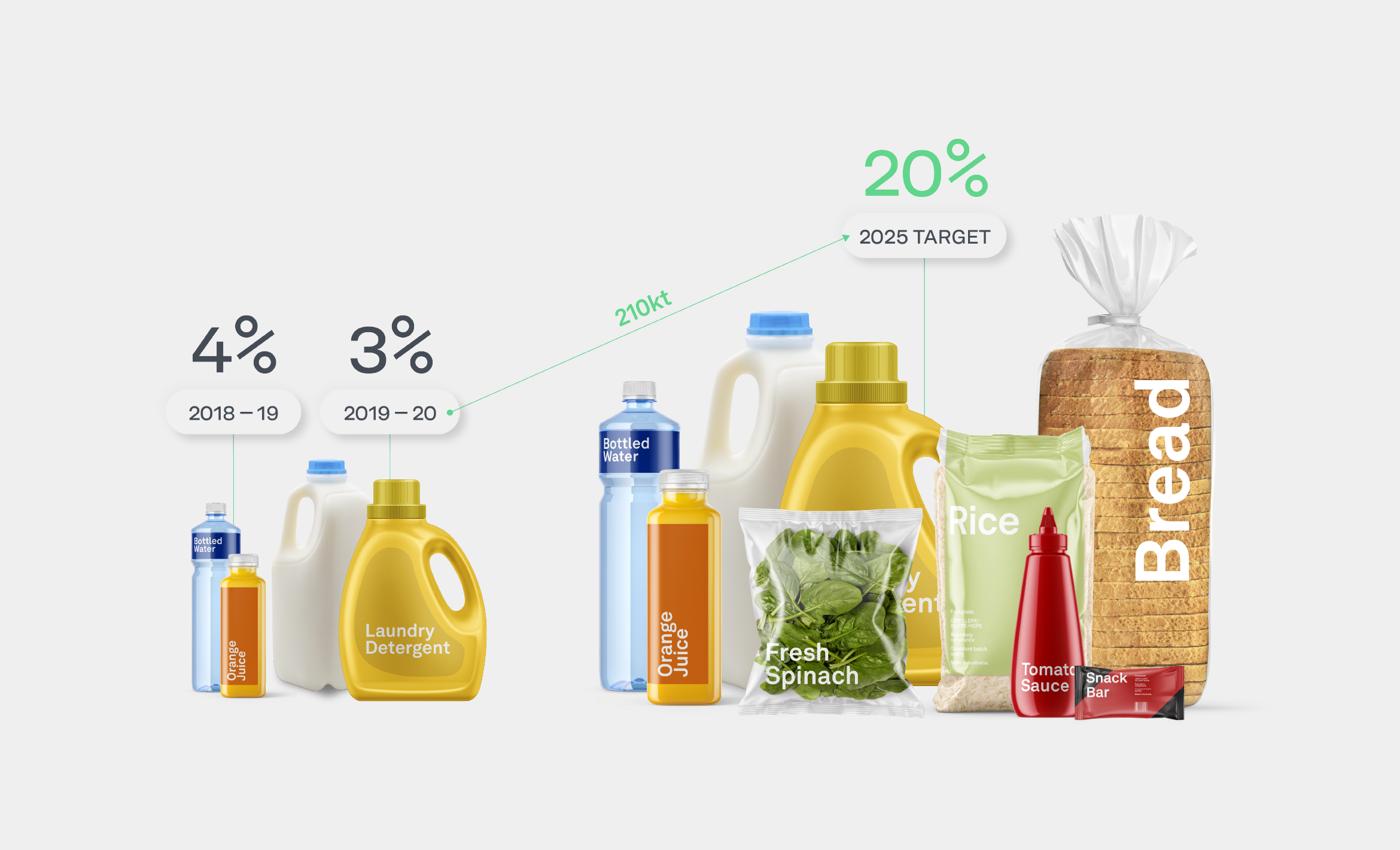Qenos
A unique communication design to introduce a new circular plastic economy in Australia.
Services —
- Communications
- Motion Graphics
- Web Design & Development
Industries —
- B2B & Professional Services
- Technology
If you use plastic in your household, chances are, it was made by Qenos.
As the sole manufacturer of polyethylene and polymers within Australia, their challenge was to introduce a completely revolutionary manufacturing technique — a long-term sustainable solution that didn’t exist locally…yet.
We were to simplify the incredibly complex science behind the idea, positioning this novel process to industry and government as a modern solution to Australia’s waste problem

Learning how rubbish wasn’t the problem, but the solution.
When unravelling the brief, complex diagrams jumped out at us. The big question on hand was about how we’d position plastic manufacturing as a solution to the plastic rubbish problem? A design concept centred on the direct impact of the solution instead of the problem it solves.

Making science a thing of beauty.
As the brand was in its pre-sale era, there was no photography or videography for the idea. Branding for a scientific concept was a new realm for us, which meant we needed a new process in place.
Design worked closely with Strategy to take a deep dive into the complex source materials provided. We explored graphic languages, tore apart diagrams, and together, rebuilt them.
The solution was being pitched to different audiences — manufacturers, government bodies, and huge FMCGs globally. Each audience had to feel represented, going beyond the environmental impact to showcase the science and the beauty of sustainable plastic.


Communicating an exponentially more sustainable solution.
It was about completing the cycle.
This continuous cycle largely inspired our design approach of neumorphism, which made our designs take on a seamless, light feeling to it. This led to a custom diagram style, to really simplify the process. We pre-empted audience pain points, tackling questions through interactive diagrams of current and future states with the help of neumorphism.
Green solutions can be reinvented to break down established trends.
When we focused on the problem, we fell into the trap of pre-established design when thinking about sustainability. Being able to reflect the beauty of simplicity in science through design is important, especially when it comes to complex sustainable solutions. It also helped reiterate the strength of our team coming together. We’re past the quintessential eco-brand identity.
The industry knows. We know.
The role of design in transformational change can be to simplify the seemingly impossible and help bring industries together to take ownership of their sustainable solution.